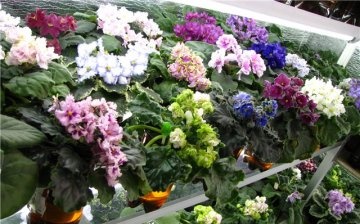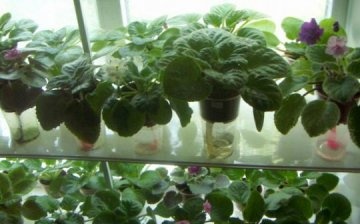Wick watering violets
In a pallet or under leaves - this is how all beginner lovers of violets are watered, but over time, this method of watering does not bring very good results: violets either wither from lack of moisture, or their roots rot from an excess of moisture. Therefore, many are switching to wick watering of violets.
What is wick irrigation?
This is a method of irrigation that is based on the use of a wick - a cord through which moisture enters and enters the substrate. As soon as it dries up, the moisture is tightened again, so the plant receives water in the amount that is necessary for its comfortable life.
Pros of wick watering violets
- plants do not experience stress due to abundant watering or lack of moisture;
- caring for violets becomes much easier - there is no need to check whether it is necessary to water the plant and calculate the required amount of water;
- the substrate is always moistened evenly with a wick;
- violets can be safely left "alone at home" and go on a long vacation during the holidays;
- violet bushes remain small and do not require large pots, since they devote all their strength to flowering, and not to the development of leaves;
- violets, living in comfortable conditions, begin to bloom much earlier and more magnificently.
What should be the wick?
For the wick, it is necessary to choose a synthetic material that has capillary properties (it is well wetted).
The wick is about 20 cm long and half a centimeter thick.
The color of the wick does not matter, but it should not color the water.
The main thing is the distance between the water level and the bottom, the wick should always touch the solution, but the bottom of the pot should remain dry.









I water it the old fashioned way, from underneath, so that water does not get on the ovaries and leaves. Violets grow and bloom. The described method, of course, is good, but I'm already very used to my own, I'm not going to change it.